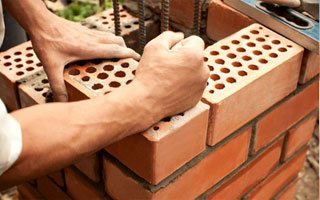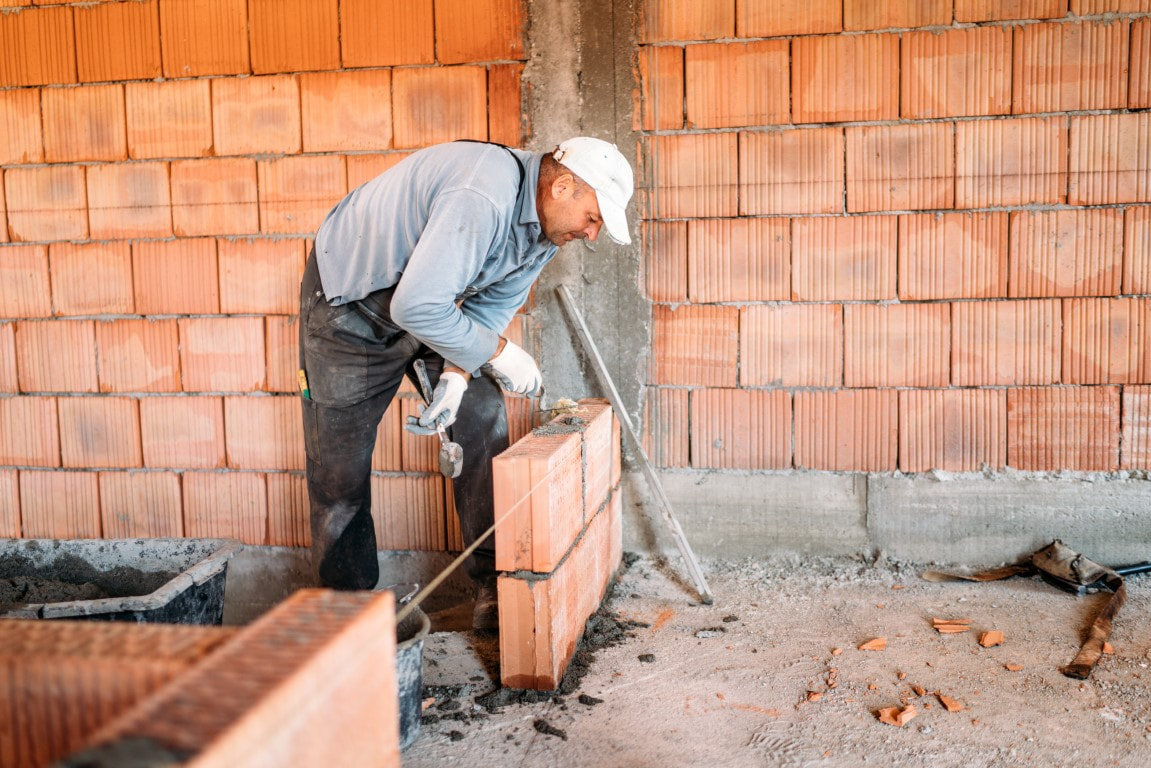Opening the Secrets of Lasting Stonework Building Practices for Eco-Friendly Structures
In the world of modern-day construction, the quest of lasting techniques has become critical. Among the myriad strategies to environmentally friendly structure, lasting stonework building stands apart as a reliable and sturdy technique that holds a wide range of untapped possibility. From the choice of products to innovative building and construction methods, the tricks to achieving sustainability within masonry building and construction are diverse and fascinating. By discovering the advantages, materials, methods, and future fads of lasting masonry, a much deeper understanding of how these techniques can form the future of environmentally friendly buildings emerges.
Benefits of Lasting Stonework Building
Accepting sustainable stonework building techniques not only minimizes ecological impact but also supplies lasting economic advantages to home builders and communities. By using materials like recycled blocks, obstructs, and stones, contractors can considerably reduce the carbon footprint of their jobs while advertising resource performance. In addition, lasting masonry construction techniques, such as correct insulation and thermal mass buildings, can boost energy performance within buildings, causing lowered functional prices with time.
In addition, the resilience and strength of masonry frameworks contribute to long-term financial benefits. Structures constructed using sustainable masonry practices often require much less repair and maintenance, converting to cost financial savings for building contractors and building owners. The durability of masonry products also ensures that frameworks stay steady and secure, minimizing the need for regular improvements or replacements.
Eco-Friendly Masonry Products
Making use of eco-friendly masonry products is a critical step towards enhancing the sustainability of building methods and lessening environmental influence while taking full advantage of long-term economic advantages. Lasting masonry materials are sourced, created, and utilized in a way that lowers total environmental influence. Products such as recycled bricks, reclaimed rock, and sustainable cinder block are coming to be progressively preferred selections for eco-conscious contractors. Recycled blocks, for instance, not only divert waste from landfills but likewise need much less energy to produce contrasted to new bricks. Redeemed rock provides a distinct aesthetic allure while minimizing the demand for brand-new quarrying. Lasting concrete obstructs integrate recycled aggregates and might feature enhanced insulation residential properties, contributing to energy efficiency in buildings.
Additionally, natural products like adobe, rammed earth, and straw bales supply superb thermal mass residential properties, reducing the demand for home heating and cooling power. These products are commonly in your area available, advertising local economic climates and minimizing transportation-related carbon discharges. By choosing eco-friendly masonry materials, building jobs can considerably reduce their environmental impact and contribute to the production of healthier, a lot more sustainable constructed settings.
Energy-Efficient Masonry Strategies
Power efficiency plays a critical role in boosting the sustainability of stonework construction practices. By implementing energy-efficient stonework methods, building contractors can substantially decrease the general energy intake of a building, causing lower operational costs and a smaller sized ecological impact. One crucial energy-efficient masonry technique is making use of thermal mass, which entails incorporating dense products like concrete or block right into the structure's structure to take in and save heat. This helps manage interior temperatures, decreasing the requirement for mechanical home heating and cooling down systems.

Developments in Sustainable Masonry
Recent advancements in lasting stonework methods have brought about ingenious methods that are reshaping the building and construction market. One such innovation is the growth of self-healing concrete, which makes use of germs embedded within the concrete to heal splits autonomously. This innovation not just lowers maintenance expenses yet also improves the longevity of stonework structures, adding to their sustainability.
One more noteworthy innovation is using recycled aggregates in stonework building - masonry contractor. By incorporating materials such as smashed ceramic waste or recycled glass into concrete mixes, builders can minimize the environmental effect of construction jobs while keeping structural stability. This practice not just diverts waste these details from landfills yet likewise conserves useful reference natural deposits, making it a key advancement in sustainable masonry building
Moreover, the assimilation of electronic layout devices, such as Building Details Modeling (BIM), is transforming the means stonework frameworks are intended and constructed. BIM enables more specific computations, decreased product wastefulness, and improved power performance, ultimately resulting in more sustainable building practices. These advancements collectively symbolize a promising future for sustainable stonework construction in the period of environment-friendly structures.
Future Trends in Stonework Sustainability
With the cutting-edge strides made in lasting stonework techniques, the future fads in stonework sustainability are positioned to additional reinvent the building market. One of the essential patterns shaping the future of masonry sustainability is the increased integration of technology. Developments such as Building Information Modeling (BIM) and virtual reality simulations are being utilized to optimize stonework building and construction procedures, causing minimized material waste and improved energy efficiency in structures.
Moreover, the advancement of novel sustainable materials is readied to play a considerable role in enhancing the eco-friendliness of stonework building. masonry contractor. Developments like self-healing concrete, recycled accumulations, and bio-based binders are getting traction for their ability to decrease ecological impact while keeping architectural integrity

Verdict
To conclude, sustainable masonry building and construction techniques supply numerous advantages for environmentally friendly buildings. By utilizing environmentally friendly materials and energy-efficient techniques, masonry can contribute to a much more sustainable built atmosphere. Technologies in lasting masonry are continually being created to better boost the ecological efficiency of buildings. Looking towards the future, the trend of stonework sustainability is anticipated to grow, causing more environmentally friendly and energy-efficient construction practices in the years ahead.